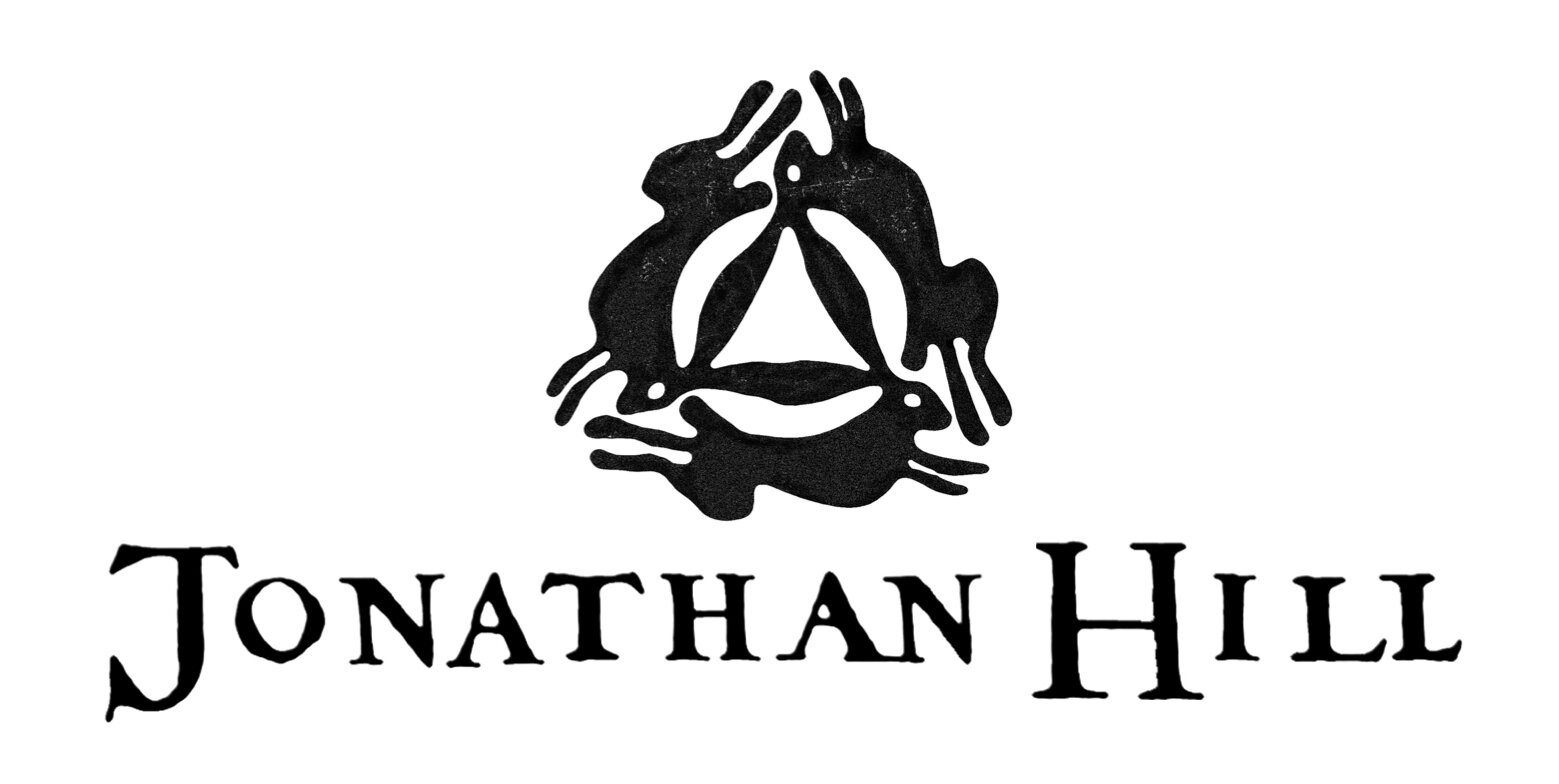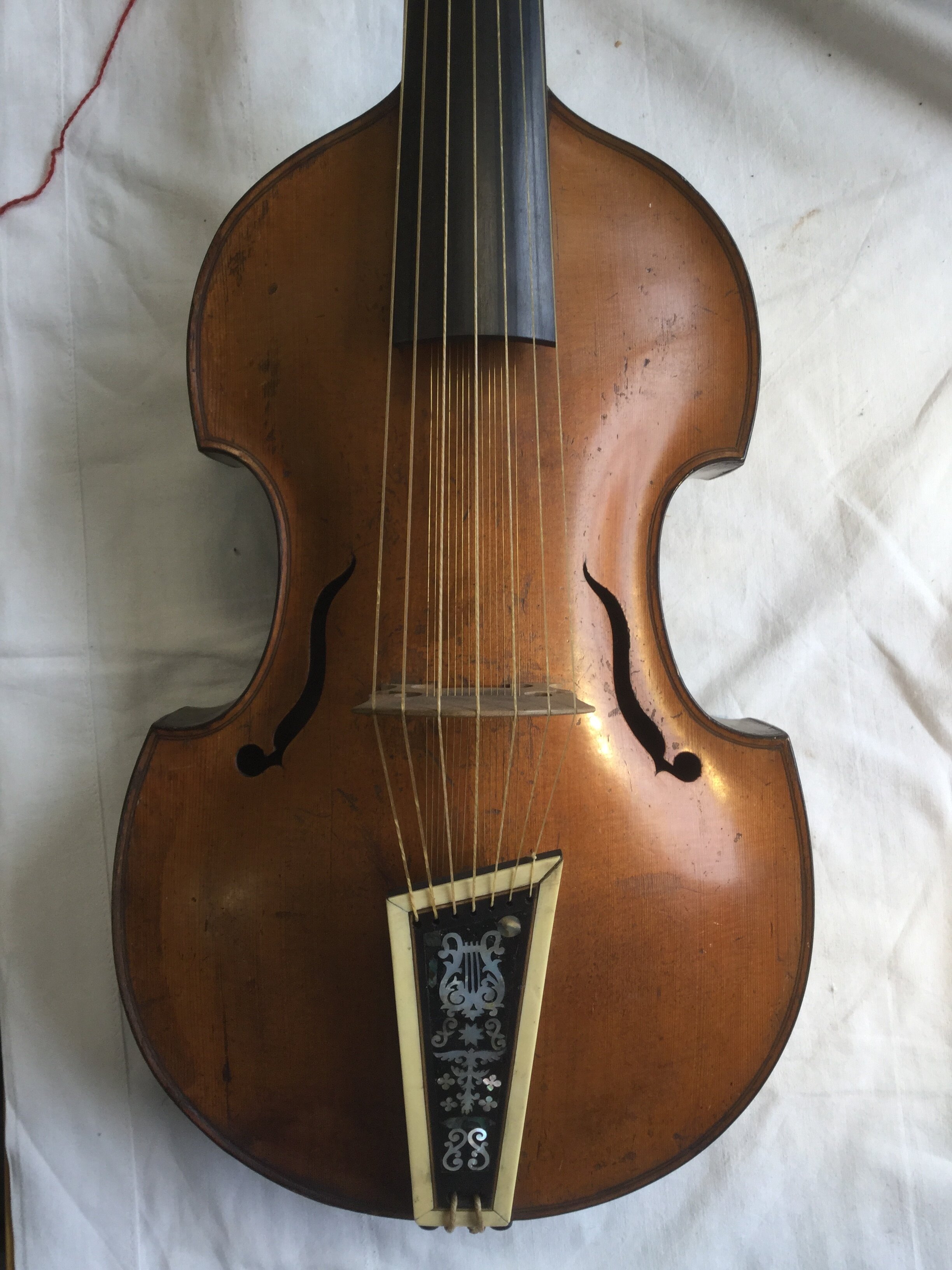Viola d’amore by Johann MArtin Helmer, Wien, 1742
The body of this Viola d’amore, which currently belongs to the German National Museum, is 38cm long and is typically bohemian in style with it’s flat back, high rounded arching and ‘Eberle’ style sound holes. The only decoration is a single line of purling on the front.
Internally, the instrument has the usual spruce soundest plate, spruce corner and end blocks blocks and wooden linings. There are, however, no cross braces as is typical on a flat backed instrument and the centre joint on the back is re-inforced with parchment. Notice the rib joints- they are not mitred - the upper and lower ribs simply overlap the C bout ribs, a feature that is typical of Violas d’amore of this type.
The back has two shallow 'folds or ‘breaks’ including this one down the bottom end to make the instrument easier to hold, as the ribs are as high as 60mm in the C bouts.
The tailpiece shown here, which I suspect is not original and has been added later, is incidentally completely flat.
The neck is well made with some fine carving, and is bohemian in style, but it’s unclear whether it is original to this instrument- it has pegs to accommodate 7 playing strings and 14 sympathetics, suggesting either it was made for an engliache Violet or that this instrument was intended as a viola d’amore with 14 sympathetic strings.











